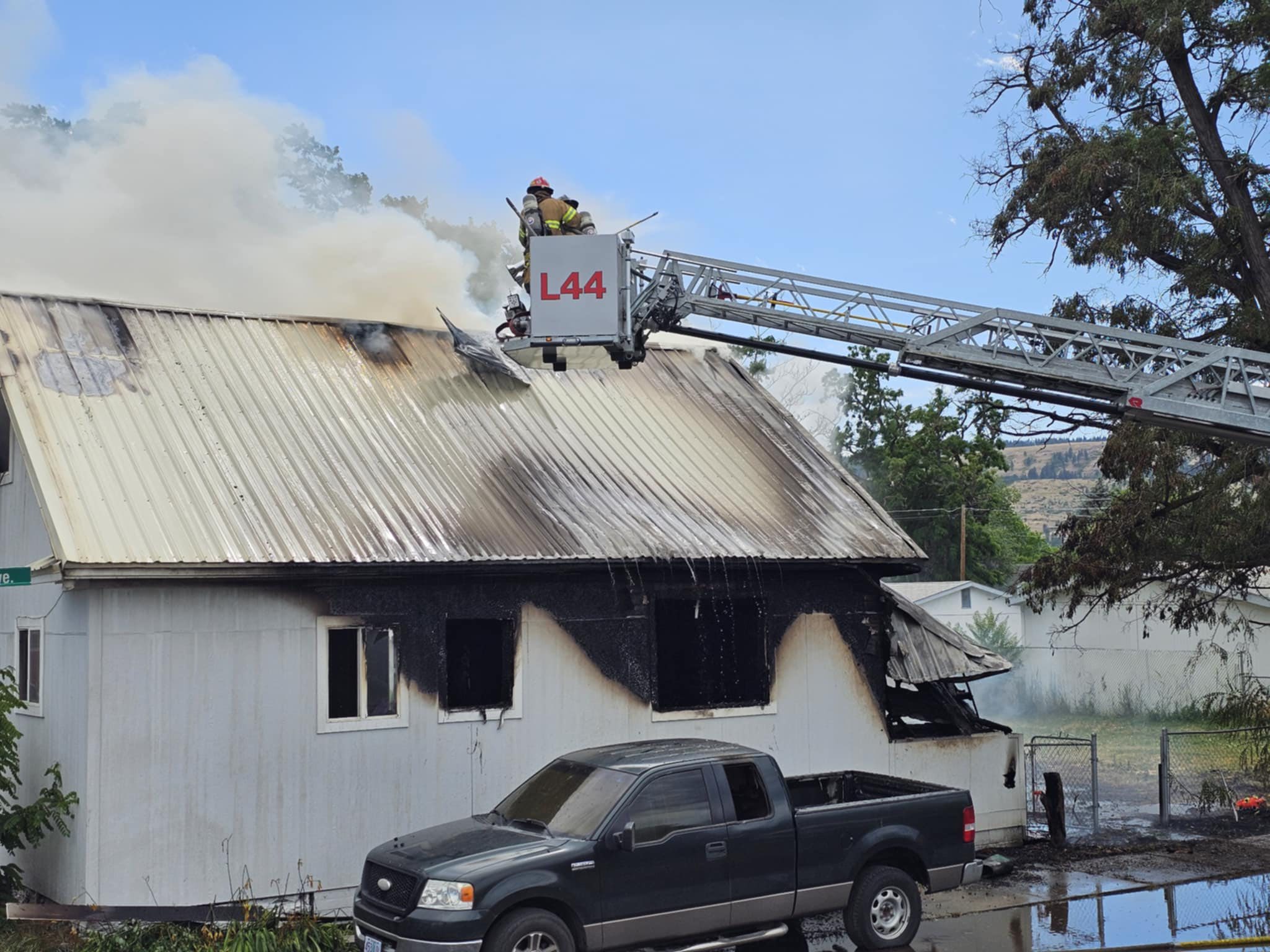Proponents of school safety bill urge rural counties to install alarm system
Published 3:00 pm Tuesday, July 25, 2023

- Hays
LA GRANDE — The Oregon House passed a record $10.2 billion budget for K-12 schools at the end of June, which includes $2.5 million allocated to the installment of silent panic alarm systems.
Proponents of the system say silent panic alarm system technology can be used for medical and other emergencies, and urge rural communities to take advantage of state funding once the application process begins.
Alyssa’s Law
“I never thought that my daughter, Alyssa, who was only 14, would be murdered in her English classroom here in Parkland, Florida,” Lori Alhadeff, the president of Make Our Schools Safe, said.
Alyssa was a victim of the 2018 Marjory Stoneman Douglas High School shooting, which left 17 people dead and 17 others injured. Alhadeff looks to add Oregon as the sixth state to adopt Alyssa’s Law, which mandates that public schools install a SPAT system that is directly linked to law enforcement and aims to cut down emergency response times.
“We said that we lived in the ‘Parkland bubble,’” Alhadeff said of the Miami suburb. “Unfortunately, these shootings can happen anywhere, and it’s vitally important that schools are prepared for putting in as many school safety measures and layering those school safety measures in their school to protect their students.”
Rep. Emerson Levy, D-Bend, introduced Alyssa’s Law to Oregon through House Bill 3101, which waits in limbo now that the 2023 regular session ended. However, funding to make the law possible has been acquired through the education budget.
“The $2.5 million is there, and as soon as the Department of Education does the rule making, that money will be available to schools,” she said. “It’s $2,000 per school for them to use the SPAT technology.”
Levy said the $2,000 is enough for a school to install a “mobile baseline model” of the alarm system. If schools want to build upon the mobile system or install a hardwire system instead, they would need to pull additional money from their budgets as the $2,000 would not cover all of those costs.
“We’re giving them the baseline to have what they need to respond to emergencies better,” she said.
LGPD school zone presence
La Grande Police Department Lt. Jason Hays said school and children safety is a priority.
He said it is in LGPD’s procedures to have officers in school zones during drop-off in the mornings and — resource depending — during pickup after school.
”Our response time to emergencies during those times are immediate. Any other time, our response time to the schools in the case of emergency would be anywhere between one minute and three minutes,” he said.
Hays added that because of LGPD’s prioritization of protecting children in school, he’s not sure a panic alarm system would make a difference.
”We’re going to respond with the same safe, but hasty, manner whether it came in on a 911 call from a faculty or staff as it would if it came from a panic alarm,” he said.
SROs cut down response time
Union County Sheriff Cody Bowen said his office provides two deputies with student resource officer contracts for the La Grande School District.
“Most of the time, the (SRO officer) deputies are in-house, so the response times for our office is sometimes right there on-scene,” he said. “Also, La Grande Police Department is within the city, so any major calls or stuff they also respond to as needed. Response time isn’t really an issue.”
Despite his confidence in La Grande law enforcement’s emergency response times, Bowen said the SRO deputies don’t have a fixed schedule that assigns them to a specific school when they’re on the job, and he is “in support of anything that increases response time.”
“The panic alarms I think would be helpful in notifying us that there’s a situation going on. I think anything that gets information to law enforcement sooner would be beneficial,” Bowen said. “I would have to find out exactly what the scope of those panic alarms would be before I would say, ‘Yeah, that would help us,’ or ‘Yeah, that might hurt us.’ I don’t know.”
Levy emphasized that SPAT can be useful in any type of emergency, citing that of the feedback the system has received, 80% of its mobile application use has come from medical emergencies such as kids having seizures and anaphylactic shock or athletes getting injure.
“The most important takeaway is that Alyssa’s Law is not just for bad guy events,” she said.
Important features of SPAT include geolocation to pinpoint where the emergency is occurring and system wide alerts, Alhadeff said.
“What the system does, the second (someone) hits that button, it will alert every teacher who has access to an epipen, every teacher who’s CPR certified of the emergency,” Levy said.
Bowen said he “could see a benefit” in the geolocation feature of SPAT.
“A lot of the time our deputies, and not just our SROs, but all of our deputies are walking through the schools and familiarizing themselves with the schools and their layouts, and they know where the classrooms are at and the numbering,” he said. “Most of them are familiar with that information already, but the sooner we can get accurate information, it just helps us do our job, so I would be a proponent of that.”
Going nationwide
Levy said she has not yet talked to anyone from the La Grande School District about potential installation of silent panic alarm system technology.
“We don’t expect every school to join the program of using SPAT technology. It might not make sense for them, but every school that it does make sense, I hope that they will come along,” she said.
Bowen said although many kids in La Grande are educated on the safe handling of weapons, the threat of gun violence in schools is ever present.
“It’s a concern across the nation. I don’t think we’re immune to it by any means,” he said. “I don’t think that we are any less susceptible to someone struggling with mental health issues that wants to do evil. That could happen in a big city, or that can happen here.”
Hays said, although he hopes it never does happen, LGPD prepares for an active school shooter threat “all the time,” because it could happen in any community.
”I just think that we have to have the mindset that it could happen,” Hays said. “We look at what happened in other places so that we can be better prepared.”
According to OregonLive, Union County has an above Oregon average rate of 17.7 gun deaths per 100,000 people.
As for Alhadeff, she hopes that Alyssa’s Law is passed nationwide.
“These measures are so important because we need to make sure that when we send our kids to school, they come home alive,” she said.









